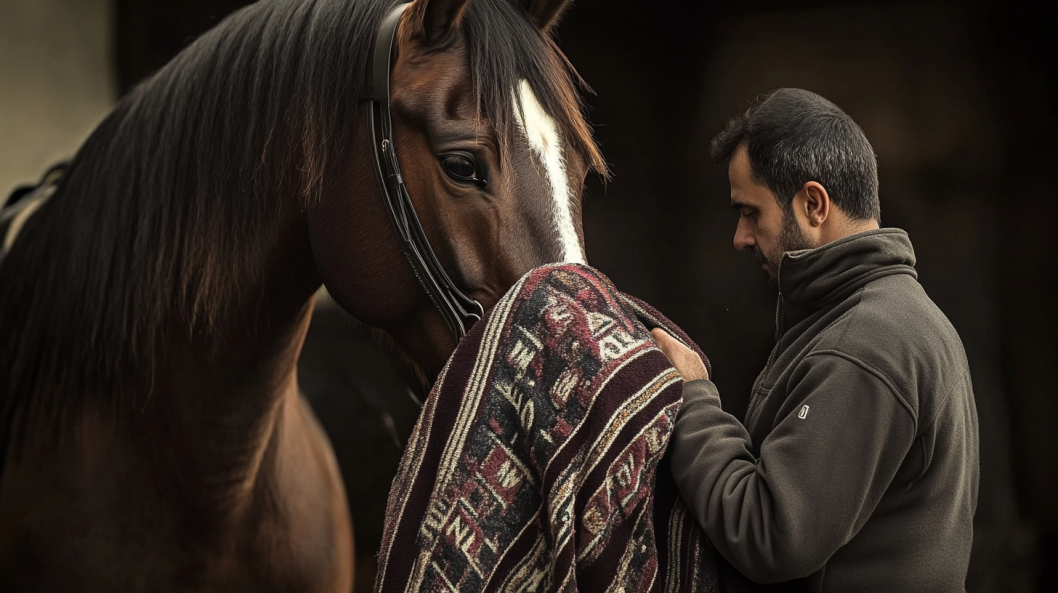A well-fitted horse blanket is essential for keeping your equine friend warm, dry, and comfortable. Whether protecting your horse from cold rain or providing extra warmth, proper fitting is key to ensuring the blanket does its job effectively.
One of the most overlooked aspects of equine care is properly fitting horse blankets. Many horse owners assume a blanket is just a cover, but getting the fit right can significantly affect your horse’s comfort and well-being. In my opinion, investing a little extra time and attention to detail in fitting your horse’s blanket is a crucial part of responsible horse care. Here’s a comprehensive guide to fitting a horse blanket for maximum comfort:
1. Understand Blanket Types
Before fitting a blanket, it’s important to understand the different types available:
- Turnout Blankets are designed to keep horses dry and warm in the field. They are usually waterproof and durable.
- Stable Blankets: For use inside the barn, they provide warmth but aren’t necessarily waterproof.
- Sheet Blankets: Lightweight and often used in milder weather or to keep the coat clean.
2. Measure Your Horse Correctly
To ensure the right fit, measure your horse accurately:
- Length: Measure from the center of the chest (where the blanket will sit) around the horse’s side to the point of the buttock. This measurement determines the blanket size.
- Neck: Check the size of the blanket’s neck cover (if applicable) to ensure it aligns with your horse’s neck length and shape.
- Girth: Measure around the horse’s girth area to ensure the blanket’s straps fit comfortably.
3. Choose the Right Size
Blankets come in a range of sizes, typically measured in inches. Refer to the manufacturer’s sizing chart and choose the size that matches your measurements. A too-small blanket may not provide adequate coverage, while one too-large can cause discomfort and bunching.
4. Adjust Straps and Fastenings
Once you have the right size, adjust the blanket’s straps and fastenings:
- Chest Straps: Ensure they are snug but not too tight. The blanket should stay in place without restricting movement.
- Leg Straps: These should be adjusted to keep the blanket from shifting but not so tight that they restrict your horse’s movement or cause discomfort.
- Surcingles: If your blanket has surcingles (belly straps), adjust them to provide a secure fit without excessive tightness.
5. Check for Proper Coverage
The blanket should cover your horse from the neck to the tail without leaving gaps. Ensure the blanket doesn’t pull or bunch up, which can cause rubbing and discomfort. The hem should fall evenly along the sides of the horse.
6. Assess Comfort
Observe your horse’s behavior after fitting the blanket. Look for signs of discomfort such as pawing, tail swishing, or unusual movement. The blanket should be snug enough to stay in place but loose enough to allow freedom of movement.
7. Regularly Inspect and Adjust
Horse blankets can shift or loosen over time. Regularly check the fit, especially after turning out your horse, and make adjustments as necessary. Inspect the blanket for wear and tear to ensure it remains in good condition.
8. Consider Seasonal Adjustments
Different weather conditions may require different blankets or adjustments. For colder weather, you might need a blanket with more insulation. In milder conditions, a lighter sheet or blanket may be sufficient.
9. Seek Professional Advice
If you’re unsure about fitting or your horse has unique needs, don’t hesitate to consult a professional, such as an equine veterinarian or a tack shop expert. They can provide valuable insights based on your horse’s specific needs.
In my opinion, fitting a horse blanket properly is not just about choosing the right size but about ensuring your horse’s overall comfort and health. A well-fitted blanket enhances your horse’s well-being and can prevent many problems related to discomfort and potential injuries. Taking the time to get it right reflects your care and commitment to your horse’s happiness and quality of life.





